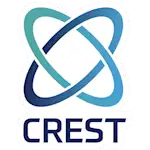PoC Exploit Released for Linux-PAM: What to Know
Would you like to learn more?
Download our Pentest Sourcing Guide to learn everything you need to know to successfully plan, scope, and execute your penetration testing projects.
What should you and your team know for the PoC exploit released for the Linux-PAM vulnerability?
A proof-of-concept (PoC) exploit for a dangerous local privilege-escalation bug in Linux Pluggable Authentication Modules (PAM) has been publicly posted, raising the urgency for system administrators and security teams to patch and harden affected machines.
The vulnerability (tracked as CVE-2025-6018) allows a local, unprivileged user to spoof a “physically present” session (the allow_active/console trust zone) and invoke privileged polkit actions, effectively bridging the gap from a normal user to root on many distributions.
The Linux-PAM Vulnerability: a History
Researchers disclosed the PAM design/configuration issue in mid-2025; Qualys and other research teams published technical writeups showing how PAM and session components can be abused to elevate privileges.
Since then, public PoC code has since appeared on multiple repositories and in Exploit-DB, meaning any local user with an account (including through SSH or a GUI session) could reproduce the escalation on unpatched systems. Security teams should treat the presence of public PoCs as a high-urgency indicator.
CVE-2025-6018 itself stems from PAM configuration and environment handling that can be coerced to mark a remote or non-console session as allow_active (a trust level normally reserved for physically present users). Once that trust level is obtained, the attacker can leverage polkit (PolicyKit) actions (many of which are allowed for allow_active users) to perform privileged operations without providing root credentials.
Some attack chains also chained a vulnerable udisks/libblockdev component to move from allow_active to full root. The vulnerability is not a single-line memory bug in the kernel; it’s an authentication/trust-boundary logic bug with powerful consequences when exploited.
Who is Impacted By CVE-2025-6018?
Those who have been confirmed to be affected include systems running vulnerable PAM configurations on openSUSE Leap 15 / SUSE Linux Enterprise 15, alongside other distributions that included similar PAM setups. Vendor advisories and distro security pages list affected versions and mitigations.
Because the issue is configuration/flow-based, the exact exposure depends on distribution, installed PAM modules (e.g., pam_env, pam_systemd), and whether polkit/udisks components are present and callable under the target policy. A conservative assumption is that numerous desktop, server, and cloud images that include pam_env + systemd/polkit are at risk until patched.
PoC Status
Public PoCs are now available (mirror posts on GitHub and an Exploit-DB entry). While these PoCs mostly target local environments and require an account on the target machine, they materially lower the barrier for opportunistic abuse and insider misuse.
In practice, that means:
Any compromised or rogue low-privilege account on an affected host can be escalated to root quickly
Automated scanners and malware authors can incorporate the PoC into post-compromise toolsets.
It's advised to not treat this vulnerability as low risk simply because it’s “local." Many modern intrusions begin with a foothold (such as phishing, credential reuse, or exposed services), and a PoC turns footholds into full compromises.
What Has Been the Response to CVE-2025-6018?
SUSE has published updates and advisories and changed defaults where appropriate (for example, changing how
pam_envreads user.pam_environmentfiles and addressing functions that operate on user-controlled paths). Administrators on SUSE platforms should apply the SUSE security updates viazypper/YaST immediatelyUbuntu and other distributions have recorded the issue and provided CVE pages and mitigations; distro-specific packages and advisories are available
The original research and writeups (including Qualys TRU and others) describe the discovery and responsible disclosure timeline; it's advised to consult those advisories for deeper technical context
Action: Prioritize patching PAM packages and related components on all affected hosts. If a vendor patch is not yet available for your distribution, apply configuration mitigations described below as soon as possible.
What Organizations Can Do to Stay Protected
Patch first. Apply the vendor security update for linux-pam as soon as it’s available for your distro. This is the highest-priority action
Disable or restrict pam_env reading of
~/.pam_environment. Where possible, configurepam_envnot to read user-writable environment files by default (SUSE changed the default for this behavior in its updates)Harden polkit policies. Review polkit rules to ensure sensitive actions aren’t granted to
allow_activeimplicitly; where feasible require authorization for key actionsMinimize local account exposure. Remove or lock unused local accounts, tighten SSH access (disable password auth where possible; use keys + MFA), and reduce the number of users with shell access
Segment and monitor console/trust boundaries. Treat console/GUI sessions differently and monitor for anomalies that attempt to simulate a console session
Apply principle of least privilege for helper daemons. Services that interact with session/user context (udisks, libblockdev, polkit) should run with minimal privileges and explicit policy
Short term workaround (only if patches are unavailable): enforce stricter PAM configuration (e.g., remove
pam_envfrom sensitive service stacks), but test first. Changing authentication stacks can lock users out. Best practice is to always validate in staging
Detection Guidance
Unusual polkit activity: audit
journalctlfor unexpected polkit authorizations or fororg.freedesktop.*method calls initiated by non-console sessionsSession anomalies: look for session identifiers, XDG_SESSION or XDG_RUNTIME modifications originating from SSH sessions where they shouldn’t exist
Post-exploit artifacts: newly elevated processes calling systemctl, udisksctl, or modifying system services; creation of unexpectedly writable files in
/etcor other sensitive locationsAlert on PoC artifacts: monitor for the appearance of public PoC filenames or known script signatures in user home directories or temporary folders
Risk Assessment and Timelines
High risk for hosts with exposed login paths (SSH, web shells, weak credentials), developer workstations, container hosts that allow local user access, and multi-user servers
Medium risk for locked-down servers with no interactive users, but risk increases if any service provides shell access to arbitrary users
Patch window: treat PoC publication as the start of the clock: prioritize patching within 24–72 hours for exposed systems and apply compensating controls immediately
Conclusion
The best defense is swift patching from distribution vendors, expected imminently for most Linux variants. Until then, administrators should audit local user privileges, disable unnecessary pam_namespace features, and monitor for suspicious symlink activity using tools like auditd.
While firewalls or intrusion detection systems (IDS) offer partial shields against related threats, they can often fall short of local exploits that bypass network layers. Cyber professionals urge organizations to prioritize this in their patch management cycles to avert potential chaos.
In terms of urgent next steps for those impact by CVE-2025-6018, experts advise to:
Patch immediately
Treat PoC publication as active threat
Reinforce vendor/supply-chain hygiene
Contact Us
Speak with an Account Executive











